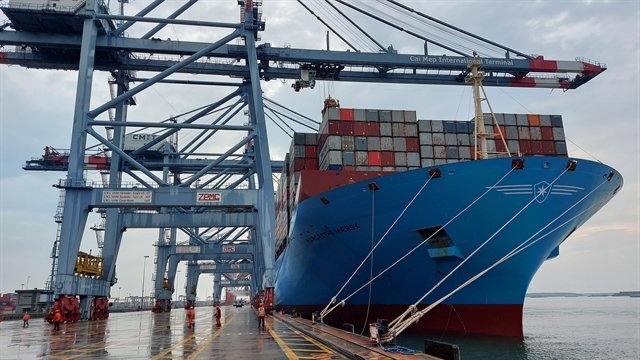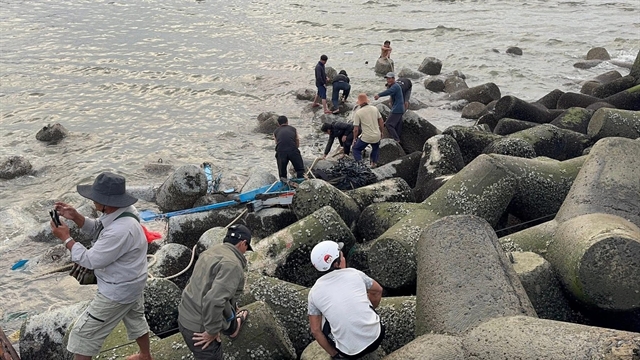 Society
Society

One of the world’s largest container ships, Margrethe Maersk, from October 25 docked at the Cái Mép International Terminal (CMIT) in Bà Rịa - Vũng Tàu Province, a milestone in Việt Nam’s navigation history.

|
| The Cái Mép International Terminal in Bà Rịa - Vũng Tàu Province receives the world’s largest container ship, Margrethe Maersk, on October 25. — VNA/VNS Photo Ngọc Sơn |
HCM CITY — One of the world’s largest container ships, Margrethe Maersk, has docked at the Cái Mép International Terminal (CMIT) in Bà Rịa - Vũng Tàu Province from October 25, a milestone in Việt Nam’s navigation history.
Located in the southern province of Bà Rịa - Vũng Tàu’s Phú Mỹ Town, CMIT is a joint venture between Vietnam National Shipping Lines (Vinalines), Saigon Port, and APM Terminals.
It is one of the largest terminals at the Cái Mép-Thị Vải deep-water gateway port complex, which accommodates mainline vessels with a capacity up to 21,500 twenty foot equivalent unit (TEU) connecting Việt Nam with Europe, North America and Asia.
Margrethe Maersk is nearly 400m long and 59m wide and has a deadweight tonnage of 214,121, with a capacity of more than 18,300TEU.
It is estimated that it is longer than the height of the Eiffel Tower and 5.5 times as large as an Airbus A380 aircraft.
It is operated by the world's largest shipping 2M Alliance led by Maersk Line and Mediterranean Shipping Company, offering weekly services between Asia and the US west coast.
With the arrival of the Margrethe Maersk, CMIT becomes one of 20 ports in the world able to handle an 18,300-TEU vessel, affirming the position of the port complex on the world maritime map.
The event has special significance in the context of the many free trade agreements that have been signed by Việt Nam, such as the Europe-Vietnam Free Trade Agreement (EVFTA) and the Comprehensive and Progressive Agreement for Trans-Pacific Partnership (CPTPP).
Exports can be loaded on large ships at the port that go directly to major markets like Europe and the US, without needing transit at transhipment ports in Singapore and Malaysia. This improves market access, reduces logistics costs, and enhances competitiveness. — VNS




